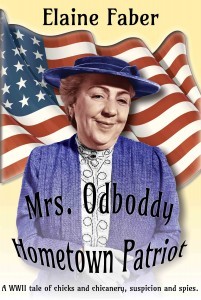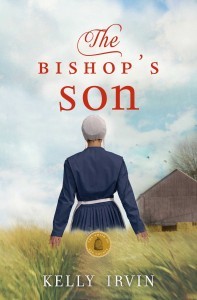James R. Callan's Blog, page 18
January 29, 2016
Cats Give Way to WWII
Today’s guest is Elaine Faber, the California writer who generally has a  cat as the chief sleuth. She departs from that to bring us a story centered around World War II in her latest novel, Mrs. Odboddy – Hometown Patriot. (Of course, there’s a cat in it.) Elaine is a member of Sisters in Crime, Inspire Christian Writers, and Cat Writers Association. She will give a free copy of this book to one person who leaves a comment. Heeeerrrree’s Elaine.
cat as the chief sleuth. She departs from that to bring us a story centered around World War II in her latest novel, Mrs. Odboddy – Hometown Patriot. (Of course, there’s a cat in it.) Elaine is a member of Sisters in Crime, Inspire Christian Writers, and Cat Writers Association. She will give a free copy of this book to one person who leaves a comment. Heeeerrrree’s Elaine.
While researching California WWII events, the following events became an integral part of the plotline for Mrs. Odboddy – Hometown Patriot.
Rationing: The government convinced the Americans public that giving up their precious food, clothing, tires, and other goods was not only necessary to win the war, but was patriotic.
 During part of 1942-43, coffee was rationed; one pound every six weeks per adult. This was due to Brazil’s blockade of ships bringing coffee to the United States, as well as the need to send much of the limited supply to the troops.
During part of 1942-43, coffee was rationed; one pound every six weeks per adult. This was due to Brazil’s blockade of ships bringing coffee to the United States, as well as the need to send much of the limited supply to the troops.
A citizen could purchase only five tires during the entire war. This sounds like plenty by today’s standards, but neither roads nor tires were as good in 1942 as today. People were strongly encouraged, almost required, to car pool or use bicycles and motorcycles.
Sugar and other food items were extremely expensive and required a ration stamp which limited its purchase. Beef was in short supply and costly, as well as eggs, which induced many a chicken to take up residence in the suburban backyard.
Victory Gardens: To reduce the reliance on purchasing vegetables and fruit, it was considered patriotic to have your front lawn converted to rows of cabbages, zucchinis, tomatoes and carrots. Even Mrs. Roosevelt planted zucchini in the Rose Garden. Any high producing vegetable in a limited space became the focus of the weekend gardener and the mainstay of many Meatless Meals.
Watch Towers: Californians and Oregonians lived in fear of Japanese invasion. Volunteers were stationed in watch towers every several miles up and down the coastline with binoculars pointed skyward.
In Mrs. Odboddy–Hometown Patriot, Agnes experiences rationing, volunteering at the Ration Stamp Office, organizing can and paper drives, tending her Victory Garden and cooking meatless meals, fighting the war from the home front. But this eccentric lady also keeps an eye on her nefarious neighbors, some of whom MUST be Nazi spies. She finds herself knee-deep in what is sure to be a black market ration book scam, but when the watch tower burns down on her coast watch shift, she takes the blame to keep a National Security secret.
volunteering at the Ration Stamp Office, organizing can and paper drives, tending her Victory Garden and cooking meatless meals, fighting the war from the home front. But this eccentric lady also keeps an eye on her nefarious neighbors, some of whom MUST be Nazi spies. She finds herself knee-deep in what is sure to be a black market ration book scam, but when the watch tower burns down on her coast watch shift, she takes the blame to keep a National Security secret.
Toss in the return of an old lover from WWI who wants to re-ignite their romance, chickens in the bathroom and a search for a million dollars in missing Hawaiian money and you have the crux of the story.
When Mrs. Roosevelt comes to Newbury to attend a funeral, and Agnes’s eccentric notions become reality, she must prove she is, indeed, a warrior on the home front.
JIM: Elaine will give a free copy of Mrs. Odboddy to one person who leaves a comment (even a very short comment), chosen at random.
On Amazon at: http://tinyurl.com/hdbvzsv
Elaine.Faber@mindcandymysteries.com (e-mail)
http://www.mindcandymysteries.com (Website)
January 22, 2016
Which Baby Do I Love Best?
Today’s guest blogger is Linda Glaz. Linda is that lovely combination of a![hs1awhitened[1]](https://i.gr-assets.com/images/S/compressed.photo.goodreads.com/hostedimages/1455510653i/18110592.jpg) writer and an agent. She is an agent with the Hartline Agency and has nine books in print. Her latest, Fear Is Louder Than Words was released just last month. She is married with three children and three grandchildren.
writer and an agent. She is an agent with the Hartline Agency and has nine books in print. Her latest, Fear Is Louder Than Words was released just last month. She is married with three children and three grandchildren.
Linda will give away a copy of this book, either paperback or e-book, to one person who leaves a comment.
Here’s what she has to say about being both a writer and an agent. You’re on, Linda.
I have so many folks ask me which I love the most, writing or agenting? That is like asking me which of my kids I’d give up without a fight. And, of course, there IS no answer to that. I simply could not give one up for the other.
Writing allows me to explore and use all of the creative juices, while being an agent lets me find that next best American novel and get it into the right hands. What a rush!
![janet2[1]](https://i.gr-assets.com/images/S/compressed.photo.goodreads.com/hostedimages/1455510653i/18110593.jpg) Seeing a client’s face shining when they sign a contract I’ve negotiated for them leaves me weak-kneed and smiling like a fool. Signing a contract of my own? I guess it’s the same sappy look, and I wouldn’t trade that.
Seeing a client’s face shining when they sign a contract I’ve negotiated for them leaves me weak-kneed and smiling like a fool. Signing a contract of my own? I guess it’s the same sappy look, and I wouldn’t trade that.
What else have folks asked me on my journey? Why I write is probably asked the most often. I’ll be honest; I have to find an outlet for all of the voices, characters, ideas swirling in my head. I find myself having mental discussions about the most absurd. Therefore, I can let them out in a novel, or find someone to analyze me for $500/hour. I prefer the novel thank you very much.
What made me want to be an agent? My own agent apparently liked the way I edited, and before long, he asked me to work as an assistant helping him to weed out the obvious nuh-uhs. When an opening happened at Hartline, I had the chance to apply for it. Thinking nothing could be better than my own novel, I soon discovered writers (many of whom I would give my left arm to write as well), with stories that transported me far behind my sweet little town in Michigan. I have been to Germany on two particularly frightening and satisfying adventures. I’ve trekked into history all the way to Rome and back. Twice, I’ve had the chance to deal with weight issues, mental issues, dual timelines that bounced me from WWII back to the present.
Are all of my clients published yet? No, more’s the pity. They are amazing![Janet[1]](https://i.gr-assets.com/images/S/compressed.photo.goodreads.com/hostedimages/1455510653i/18110594.jpg) authors. Here is an excited author signing her first contract. But the climate has been a tad chilly for new authors without celebrity-sized platforms. Still, we keep plugging away. They to build platform while I scrape and scope out possible connections.
authors. Here is an excited author signing her first contract. But the climate has been a tad chilly for new authors without celebrity-sized platforms. Still, we keep plugging away. They to build platform while I scrape and scope out possible connections.
So I ask you. Which job do I give away? Who do I say no to?
Neither. I love them both and do my best to do justice to each.
![coveronlyupdate[1]](https://i.gr-assets.com/images/S/compressed.photo.goodreads.com/hostedimages/1455510653i/18110595.jpg) Here is the cover of my newest release, a romantic suspense called Fear is Louder Than Words. How about if I give away a copy of Fear Is Louder than Words? Anybody game?
Here is the cover of my newest release, a romantic suspense called Fear is Louder Than Words. How about if I give away a copy of Fear Is Louder than Words? Anybody game?
JIM: Interesting post, Linda. And that’s probably not a bad position to be in. You get to see both sides up close and personal. Reader, take a moment and add your thoughts about this dual role – would you like it? Would you pick one or the other, if you had to select only one? And Linda will give a FREE copy to one of you. I must say, I am certainly intrigues by the book. Join in.
January 15, 2016
Retirement Can Change Your Life – Or Someone Else’s Life
Retirement. That word means different things to different people. And it means different things to an individual at different times of his or her life.
Some see it as an opportunity to travel, to go places time has not permitted in the past. Others see it as a time to kick back and do nothing, watch more TV, read more books, get in a daily siesta, join a coffee klatch with other retirees, or have no sched ule at all.
ule at all.
How many retirees use the additional free time to improve their golf game, or develop a better bridge game. Others use the new-found time to work with charitable organization.
But some choose to use their skills to train or otherwise help people in need.
Sylvia had begun sewing as a child, making her own doll clothes. She continued as an adult, making her husband’s suits, ties and shirts. After awhile, Sylvia Remple began teaching sewing and eventually opened a clothing manufacturing business. It grew quickly and before long she had three hundred employees. In 1982, her company, Sun Ice, outfitted the first team of Canadians to conquer Mount Everest. Two years later, her company was awarded the contract to outfit many Canadian teams for the Winter Olympics in Los Angles. Following that success, Sun Ice became the Official Clothing Supplier to the Winter Olympics hosted by Canada
In 2001, Sylvia Remple sold the business. Retirement. What to do now?
About the same time, she became aware of the poverty in Sierra Leone and in particular, the desperate circumstances for some women. She came up with an idea.
Sylvia and daughters Tammy and Angela formed Sewing Seeds International – SSI. Its mandate was to create self-sustaining sewing schools in impoverished areas, empowering women, bringing hope for a better future.
 The first project was in Sierra Leone. SSI secured backing from some companies, purchased sewing machines and materials. In Sierra Lione, they found a place to hold classes, then advertised for women who wanted to learn a skill that would help them toward a better future.
The first project was in Sierra Leone. SSI secured backing from some companies, purchased sewing machines and materials. In Sierra Lione, they found a place to hold classes, then advertised for women who wanted to learn a skill that would help them toward a better future.
The classes were intense. Sylvia realized that to keep attendance and attention at a high level, the school must provide care for the many young children of the students. So, day care was provided, including meals.
At the end of the three-week classes, the machines were left in the classrooms and the women were encouraged to continue working on their sewing skills.
A few months later, these same women were given another three-week school, introducing them to more advanced skills. Again, the machines were left for the students to practice and make clothes for their children and themselves.
A third course was offered. Now, the students were capable of using patterns and making items for sale. But most important for the Sewing Seeds mandate, the best students were trained so they could teach classes to other women.
The success of the school encouraged SSI to move into other countries. Classes have been given in Africa, Europe, South America, and Mexico.
Has it been successful?
 Absolutely. Many of the women now make a decent living sewing for others. Several have formed companies to manufacture clothes. One graduate now has a company with eight other women working, all making a decent living. Graduates of another school formed a co-op which now has a contract to supply all the uniforms for a school system in a nearby larger town.
Absolutely. Many of the women now make a decent living sewing for others. Several have formed companies to manufacture clothes. One graduate now has a company with eight other women working, all making a decent living. Graduates of another school formed a co-op which now has a contract to supply all the uniforms for a school system in a nearby larger town.
Because they are set up to be self-sustaining, these schools should bear fruit for years to come. The Canadian government has recognized SSI as a certified charitable organization. In many places around the world, SSI is recognized as a life-saver.
Is Sylvia bored in her retirement? Not even a little. Her compensation? Seeing impoverished women now able to be self-supporting, infused with hope for a brighter future. That’s better than a paycheck.
What is her retirement? To help others.
While going into extremely poor, perhaps desperate, areas may not seem like a fun thing to do in retirement, it must be extremely rewarding and give one a true sense of worth that a game of golf probably won’t.
Sylvia would tell you she has found the perfect retirement.
What do you see for yourself in retirement?
January 8, 2016
Holland, Belgium, and Luxembourg
Holland, or The Netherlands, was guaranteed a slot on our trip. Here is a country that had to literally claim their land from the sea. No, not all of it, but keeping the sea at bay (only a tiny pun) has been a priority and a testament to the will of this country.
Yes, of course we went to see the dikes and the windmills. At one time, there were ten thousand windmills in this land about the size of Connecticut and Massachusetts combined. Originally, these pumped water out of the low areas. But they were used for just about everything that required power. They functioned as lumber mills, sawing huge timbers into boards. They ground wheat and other grains. Today there are about eleven hundred mills.
were ten thousand windmills in this land about the size of Connecticut and Massachusetts combined. Originally, these pumped water out of the low areas. But they were used for just about everything that required power. They functioned as lumber mills, sawing huge timbers into boards. They ground wheat and other grains. Today there are about eleven hundred mills.
Their most important function now is to draw tourists.
Amsterdam is a beautiful city. It has an extensive canal system, with over one hundred kilometers (62 miles) of canals. Much like a wheel, there are “spokes” radiating out from the city center and then canals circulating around, with the city center acting as the hub. A ride around these canals is a must activity for the tourist so of course we took one. Beautiful homes and buildings along the way, many dating back to 18th century.
Amsterdam is Holland’s largest city at about 800,000 (though its metropolitan population is twice that). But it is not the seat of the Dutch government. That distinction goes to The Hague. Rotterdam is more of a work-horse city, with more commerce than tourists – at least in our observance.
 Holland is a bicycling country. There are many paved bikeways across the countryside that were as wide, and better, than many country roads in Ireland – or the U.S., for that matter. It is claimed that Holland has the most extensive cycling network in the world. Amsterdam has more cycles than people.
Holland is a bicycling country. There are many paved bikeways across the countryside that were as wide, and better, than many country roads in Ireland – or the U.S., for that matter. It is claimed that Holland has the most extensive cycling network in the world. Amsterdam has more cycles than people.
Eventually, we headed south and a little least, crossing into Belgium without even a welcome sign to announce that we had left one country and entered another. Belgium was a pretty country with rolling hills, green fields, and lots of beautiful flowers. Brussels is the largest city at over a million . There is very good public transportation both in Brussels and across the country. They claimed trains between Brussels and Antwerp ran every fifteen minutes. We found nothing to dispute that claim.
Luxemburg had not been on our original list of places to visit. But, it was close and Earlene really wanted to see it, so off we went. Luxemburg is about the size of Delaware, and has a population of about half a million people. It is nestled between Belgium, Germany, and France. From Brussels, Luxemburg city (ranked as the safest city in the world) is only 132 miles away. We checked into the Double Tree, high on a hill facing Luxemburg City.
The city itself, sits on a plateau which has extremely steep cliffs on all sides. Of course, today, there are roads cut into the side to allow traffic to travel safely into the city. It is a pretty town, with century-old buildings, and of course, a palace. But one of the most surprising things was to walk into the main square and hear Cajun music – honest to goodness Louisiana Cajun music. A festival commemorated the seventy-first  anniversary of U.S. forces entering the city, having driven the Germans out. When we got into the center we could see a stage. A sign proclaimed this performance of French Cajun music was by the Louisiana Band. Eventually, we talked with the leader of the group. He was a native Louisianan, who now lives in Germany.
anniversary of U.S. forces entering the city, having driven the Germans out. When we got into the center we could see a stage. A sign proclaimed this performance of French Cajun music was by the Louisiana Band. Eventually, we talked with the leader of the group. He was a native Louisianan, who now lives in Germany.
It is indeed a small world.
After our Luxembourg visit, we headed back to Brussels and too soon were on a flight back to the Texas. It had been a wonderful trip, we had seen many interesting countries, and accumulated years of fantastic memories. Thank you for traveling along with me.
Next week, I’ll talk about something we are ALL interested in.
James R. Callan also finds time to write mysteries and suspense novels. Two of his most recent are:
Over My Dead Body, A Father Frank Mystery, and
A Ton of Gold A Crystal Moore suspense novel. Click either name for more information on the book.
“What is truly impressive about Callan’s writing is his gift for characterization.” From a review by John Brantingham of Over My Dead Body .
And, please leave a comment or a like. Thanks for visiting The Author’s Blog.
January 1, 2016
What’s It Like To Be a First Time Published Author
A.H. (Augie) Scott has been a writer all of her life. In grade school she rewrote Charlotte Bronte’s, Wuthering Heights and Shakespeare’s, The Taming of the Shrewd, for classmates to perform in a play. Writing has always been her passion. Currently she writes Victorian Thrillers, Mysteries, Westerns, YA and non-fiction. Today, she writes about the thoughts of a first time published writer.
Wow…being a first time published writer is so unbelievably delightful. The disappointed letters of rejections filled a file in your desk drawer or boxed on a shelf is the beginning of feeling rejected, almost worthless. Will this thing ever be read by more than your family and friends? Is this story worth continuing? Maybe, the critics are right…”you need more honing.”
That is exactly what you do. Hone the craft of writing into each page and painfully remove words that fill space. Determination becomes the essence of completing a readable product for future posterity. You no longer weigh the words, but their content.
Holie baloney…an editor likes the concept of your story. Not only do the editor like the concept, but really like your story. You are offered a contract…what the heck. Now comes the work of lessons previously taught of honing ones craft and marketing, and being scared out of your head begins. Is the word laying or lying? You are no longer writing for yourself, but really for others. Did this sink in…sure you told a selected group of people…have this sunk in…like a thunderbolt across Mount Saint Helen.
Contract is signed…this is happening. You are contacted by the person who edits your work…sure enough, this is serious. Edits received, art director sending proofs of cover selections, and the galleys…goodgooblygoo. After a time of editing which can take up to a year of approving, the release date is upon you.
It’s all plausible. Hang in there and keep writing.
Here is a blurb from her new book, Fanaman Curse.
 She only knew that something was dreadfully wrong…
She only knew that something was dreadfully wrong…
Charlotte dressed with haste behind the brocade dressing divider in her bedroom. “I need to get out of this cabin before he comes back. I’ll walk along the deck. It’s important that I be around other people instead of being alone. I really need to find deGraffy. Who do I trust?”
The ship docked, but Charlotte was not going ashore.
“deGraffy will tell me the truth—if he’s really Papa’s friend.”
He was number one on her list of things to do. She had to inform him that someone had been in her room, twice. She would tell him about the strangeness of the cabin steward, how he treated her and the splash that awakened her. She tried to blink away her tears as something blew into her eyes.
“Now I remember…the outer lights in the corridor were on. But when the intruder was in my room earlier, the outer corridor was very dark. That was why I could not make out who was there. The flash of light I saw appeared to have come from the corridor, maybe a torch. I’m not sure. Perhaps there was more than one person working together. What did he want…all I know for sure is that it was dark.”
Charlotte searched her handbag for a handkerchief stopping below the stairs that led to the upper deck in hopes of finding deGraffy
December 18, 2015
What happens to professional athletes after they retire?
Today, Canadian Kate Preston talks about how her first novel, A vintage  Year, came about. She explores the life of a professional tennis player a few years after he retires. She also reveals a lot about growing grapes and the wine industry. I’ve read A Vintage Year and can tell you it is worth reading. As one reviewer said, “The first chapter is worth the purchase price.” Here’s how it all happened.
Year, came about. She explores the life of a professional tennis player a few years after he retires. She also reveals a lot about growing grapes and the wine industry. I’ve read A Vintage Year and can tell you it is worth reading. As one reviewer said, “The first chapter is worth the purchase price.” Here’s how it all happened.
Awhile ago I began thinking about what happens to professional athletes after retirement since so many of them retire in their 30s for physical reasons. Unless they become sports commentators , we never really hear about them again. I imagine it would be like the college football players only on steroids. All that success through their 20s, quite possibly the only thing they had lived and trained for until their retirement. When they’re playing whatever sport they were in, they’d be mobbed by their fans. Imagine going from that existence to almost anonymity the season following retirement.
To transition from being in the lime light, competing for trophies, receiving cheers from the crowd, having fans wanting their autograph, photograph, or just a piece of them, to becoming an unknown must be pretty difficult at first, even for the most emotionally mature. Their ego must take a beating….
 Thinking about all these factors, I stared developing a character. He would be a tennis player because I play it and follow the sport, and he would have been groomed for tennis from an early age. He would have an overbearing parent. And, because he had an entourage looking after him and his needs for most of his life, he would be emotionally immature, leading to fits of temper, self-centeredness, and a lack of empathy. I know, he sounds like a charmer, but that’s the thing — he is quite the charmer, used to getting his own way with a wink and a smile. Maybe the naïve side of him didn’t quite accept that part of his charm lay with his fame and fat wallet, but as long as he was paying, he had a wide network of friends. Of course, he had to be empathetic deep down or the reader (or writer, for that matter) would never be able to bond with him.
Thinking about all these factors, I stared developing a character. He would be a tennis player because I play it and follow the sport, and he would have been groomed for tennis from an early age. He would have an overbearing parent. And, because he had an entourage looking after him and his needs for most of his life, he would be emotionally immature, leading to fits of temper, self-centeredness, and a lack of empathy. I know, he sounds like a charmer, but that’s the thing — he is quite the charmer, used to getting his own way with a wink and a smile. Maybe the naïve side of him didn’t quite accept that part of his charm lay with his fame and fat wallet, but as long as he was paying, he had a wide network of friends. Of course, he had to be empathetic deep down or the reader (or writer, for that matter) would never be able to bond with him.
I decided to start the story eight years after his retirement from tennis was because I wanted to see what he would do when he was at his own personal financial tipping point. The question was, would he be able to turn his life around or was he so spoiled and self-centered that he would dig himself into a deeper and deeper hole? I thought the best way test him was to give him a job that he would find unpleasant and unthinkable.
So, what could be worse for a man who has regular manicures and lives at five-star hotels than being, say, a farm hand? Tasks include cleaning out animal stalls, tending grape vines, and taking orders from others, all while having to keep his mouth shut. Oh, I could feel for him, yes I could. I understood his resentment, his disbelief that he was in that situation at all. Every time I pick up a toilet brush, or mop the kitchen floor, the princess inside me screams “I’m too good for this!”
I like to hope that in real life most athletes eventually adjust to normal life after retirement, and I’m sure some even revel in it, but I decided to explore what happens to one who refuses to accept defeat and realize that the glory days are over.
A Vintage Year, is an eBook available on Amazon, Barnes and Noble, and through other e-retailers. Visit http:www.kateprestonbooks.com for updates or follow her on Twitter @kprestonbooks.
December 11, 2015
Emergency Room in Sweden
We left Oslo, Norway and were quickly into Sweden. We traveled about 175 miles over good roads and through a pretty countryside. That took us to Karlskoga, a lovely town on one of Sweden’s largest lakes (and I do not remember the name of it). We decided to stay there and booked into a nice hotel just a block from the center of the city.
There was a nice sized river that ran through the town, emptying into the lake. The bridges were decorated with many baskets filled with bright flowers. A park ran along the side of the river and people were sitting at tables having lunch.
It was a delightful town and we decided to stay another day to explore a bit more. So, after two nights in Karlskoga we headed on toward Stockholm, a hundred and fifty miles to the east. With good roads and a generous speed limit, we were in Stockholm before noon.
 What a beautiful city. Stockholm, the capital of Sweden, claims nearly a million people in the municipality, with perhaps two million in the metropolitan area. It sits on fourteen islands in what is called the Stockholm archipelago. All this connects to the Baltic Sea twenty to twenty-five miles farther east.
What a beautiful city. Stockholm, the capital of Sweden, claims nearly a million people in the municipality, with perhaps two million in the metropolitan area. It sits on fourteen islands in what is called the Stockholm archipelago. All this connects to the Baltic Sea twenty to twenty-five miles farther east.
We checked out the Stockholm City Hall and Concert Hall, where the Nobel Prizes are given out. (The Peace Prize is actually awarded in Oslo, Norway, but I wasn’t going to get that one, so we didn’t bother to look up the location where it is awarded.) These are near the Stockholm Palace, which is quite large and not all that good-looking from the outside. We did not go inside. We took a boat tour around much of the city, getting off a few places to investigate further. There were many beautiful parks. Added to the great weather (days in the mid seventies and nights close to seventy), it was a very pleasant day. We stayed at a nice hotel on a shipping harbor and watched large cruise ships come and go.
Since we were driving, we frequently found ourselves in tunnels that seemed to go on forever, with many branches here and there in the tunnels. One could be lost in those for days, but we managed to limit it to only hours.
The following night we stayed in the Stockholm suburb of Kista. Here we  encountered the largest mall we have ever seen. And it included the largest food court by far, with food from every country we could think of, and a number we could not think of. But again, you can see the American influence here as well, with many U.S. chains represented. When we are traveling, we try to experience the local foods. But when I saw the sign to the left, I had to stop for a hamburger and a Dr Pepper.
encountered the largest mall we have ever seen. And it included the largest food court by far, with food from every country we could think of, and a number we could not think of. But again, you can see the American influence here as well, with many U.S. chains represented. When we are traveling, we try to experience the local foods. But when I saw the sign to the left, I had to stop for a hamburger and a Dr Pepper.
The next day, we headed south. We explored some of the mills, and small towns, and felt obliged to go into an IKEA store as it was founded in Sweden by a seventeen year old kid and now the largest furniture retailer in the world. This one was quite different from stores we’ve seen in the U.S.
We stopped in Jonkoping, a lovely town on the south end of the long lake Vattern. Earlene had developed a bad throat, to the extent that we went to the hospital emergency room. It was Sunday late afternoon. The nurses there talked with Earlene a bit, put their heads together and then said that it was not an emergency and if they did anything with here, they would have to charge us and then send us to another doctor. So, they made us an appointment with a doctor at 5:30 on a Sunday afternoon. We went to see the doctor. He took a culture, ran some tests, and decided it was not strep, gave er a sht and prescription and told us where we could get it filled on a Sunday evening. We were favorably impressed with their medical system.
 The next day, we drove to Malmo. We found this town an interesting place to spend our last day in Sweden. It is ranked fourth in the world in the number of patent applications per 10,000 residents, and the sixth most bicycle friendly city in the world. We found it visitor friendly with many interesting buildings, distinctive architecture, and beautiful sculptures. It was a nice way to end our Swedish adventure. The next day, we returned to Denmark again.
The next day, we drove to Malmo. We found this town an interesting place to spend our last day in Sweden. It is ranked fourth in the world in the number of patent applications per 10,000 residents, and the sixth most bicycle friendly city in the world. We found it visitor friendly with many interesting buildings, distinctive architecture, and beautiful sculptures. It was a nice way to end our Swedish adventure. The next day, we returned to Denmark again.
Next month, Belgium, The Netherlands and Luxemburg.
jim callan
December 4, 2015
Genesis of a Novel
Today’s guest is Peggy Blann Phifer, a retired executive assistant, who is plunging into writing now that she has the time. Her debut novel, To See the Sun, was released in 2012. Then came a novella, Somehow, Christmas Will Come, came out in 2014. at the request of the publisher, she has revamped the story and extended it to a novel which should be released about now. Peggy will select one person who leaves a comment to receive a free copy of the digital version of Somehow, Christmas Will Come. Here’s how the book started.
who is plunging into writing now that she has the time. Her debut novel, To See the Sun, was released in 2012. Then came a novella, Somehow, Christmas Will Come, came out in 2014. at the request of the publisher, she has revamped the story and extended it to a novel which should be released about now. Peggy will select one person who leaves a comment to receive a free copy of the digital version of Somehow, Christmas Will Come. Here’s how the book started.
Dateline: Las Vegas, Nevada, 2005
Las Vegas turned one-hundred years old this year. A huge Centennial celebration was underway. I became fascinated with this history of this city I adopted as my new hometown and wanted to learn more.
I bought up every book published during this time, and as I read and absorbed everything, a germ of an idea sprouted: Why not write a novel about the development of Las Vegas?
Thus began Molly Dugan’s journey. Where I came up with her name, I have no idea. It just seemed a perfect name for a character in 1905. I placed her in St. Paul, Minnesota, because I wanted her to be a northern city gal arriving to this raw railroad town on the behest of her brother, her only living relative, who lived there and had struck gold.
So, Molly takes the long train ride across the country, only to find her brother had died from a rattlesnake bite the day before she arrives. She learns that her brother has an ex-partner who thinks he has a right to her brother’s gold. Perfect setup for a Historical Romantic Suspense.
That same year, I was invited to submit a short fiction piece–1,000 words– for the Christian Fiction Online Magazine (CFOM) called “Dugan’s Deed,” based on the rough draft I’d been working on. It was published, and I thought I was well on the way to writing a full novel.
I had about 36,000 words written when life happened, and the forward momentum stalled.
Fast-forward to October 2012, when my husband passed away suddenly. All thoughts of writing died with him. With nothing left to keep me there, I pulled up roots and returned to northern Wisconsin to be near my adult children and their families…after thirty-three years in the desert southwest.
 I played around with writing until, in the first part of 2014, my long-time online friend, multi-published and award-winning author, Kathi Macias, then acquisitions editor for Elk Lake Publishing, asked if I’d like to write a Christmas story for her publisher and I jumped on it. I picked up my ‘Molly’ story. But no matter how hard I tried, I could not manage to make that story work, and decided historical fiction was not my forte.
I played around with writing until, in the first part of 2014, my long-time online friend, multi-published and award-winning author, Kathi Macias, then acquisitions editor for Elk Lake Publishing, asked if I’d like to write a Christmas story for her publisher and I jumped on it. I picked up my ‘Molly’ story. But no matter how hard I tried, I could not manage to make that story work, and decided historical fiction was not my forte.
But I hung on to Molly and reset the story to present-day Las Vegas. That novel was released in November 2014. This year, the new editor for the same publishing house approached me asking if I’d be interested in redesigning and re-releasing that book for this year’s Christmas offering.
And that’s the story of Molly Dugan’s Journey.
Book Title: Somehow, Christmas Will Come
Publisher: Elk Lake Publishing
Release Date: November 2015 (date pending)
Genre: Women’s Fiction
Back Cover Blurb:
When Molly Dugan’s best friend gets married and leaves St. Paul, Minnesota, to live in Georgia, Molly feels alone and plans a visit to her brother, Patrick, in Las Vegas. Molly had been worried about him ever since his wife died in a tragic boating accident. Grieving she could understand, but she sensed something deeper going on. And she was concerned about Patrick’s six-year-old daughter, Bethany. So she sets aside her life in St. Paul to spend an indeterminate time in Vegas. When Molly gets there, she finds more than she bargained on. And in the lead-up to Christmas, the situation only gets worse…. 6 year-old Bethany loses her last anchor. How does Molly convince her that somehow, Christmas will come?
Remember, one person who blogs will be selected at random to receive a digital copy of this book when available. So, leave a brief comment and get a chance to win!
BLOG/WEBSITE: www.whispersinpurple.com
AMAZON AUTHOR PAGE: https://authorcentral.amazon.com/gp/profile
E-MAIL: peg@peggyblannphifer.com
November 27, 2015
Postmark from the Past
Today, I’m interviewing Vickie Phelps, a woman who has published over 200 articles in both regional and national magazines. She has also published five gift books with Barbour Publishing and is the co-author with Jo Huddleston of How to Write for the Christian Marketplace and Simply Christmas. Her latest work is the novel Postmark from the Past.
books with Barbour Publishing and is the co-author with Jo Huddleston of How to Write for the Christian Marketplace and Simply Christmas. Her latest work is the novel Postmark from the Past.
Jim: Tell us a little bit about yourself.
Vickie: I’m a native Texan who has never had a desire to live anywhere else. I love books and spent eighteen years working in bookselling. I live with my husband and one very spoiled schnauzer.
Jim: How long have you been writing?
Vickie: I started writing for publication in the 80s. I sold my first short magazine piece in 1989.
Jim: What do you enjoy most about writing?
Vickie: The chance to express my thoughts through words that will touch others where they live. Writing is hard work, but when someone tells you that your story or article met a need in their life, it’s all worth it.
Jim: Do you have a set schedule for writing?
Vickie: I do my best to show up at my desk every morning at least five days a week. I don’t have a certain word count to meet each day, but I do write and revise or work on marketing for at least three to four hours.
Jim: Tell us about your novel, Postmark from the Past.
![velps-Postmark3D[1]](https://i.gr-assets.com/images/S/compressed.photo.goodreads.com/hostedimages/1455659859i/18133255.jpg) Vickie: It’s the story of Emily Patterson, a thirty-nine-year old single woman who doesn’t believe in miracles. It’s the Christmas season and she’s lonely. But then a strange envelope shows up in her mailbox. She thinks it’s just her first Christmas card of the season, but it’s much more than that. A man named Mark expresses his love for her. The only problem is that she doesn’t know who Mark is. And the envelope has no return address. From that point on, life as Emily knows it, is changed forever.
Vickie: It’s the story of Emily Patterson, a thirty-nine-year old single woman who doesn’t believe in miracles. It’s the Christmas season and she’s lonely. But then a strange envelope shows up in her mailbox. She thinks it’s just her first Christmas card of the season, but it’s much more than that. A man named Mark expresses his love for her. The only problem is that she doesn’t know who Mark is. And the envelope has no return address. From that point on, life as Emily knows it, is changed forever.
Jim: Wow. I like the sound of that. Where can readers (and I) find your novel?
Vickie: Postmark from the Past is available at www.crossrivermedia.com, or can be ordered from your favorite bookstore.
Jim: Okay, I’m on it. Are you working on a new book?
Vickie: I’m in the process of revising another novel about a man on a mission to find his uncle who disappeared without a word forty years earlier.
Jim: I like the sound of that one, too. But, right now, give us a site where we can learn even more about you.
Vickie: Visit http://www.vickiephelps.com to learn more about me as an author, writer, and booklover. You can also connect with me on social media at www.facebook.com/VickieSPhelps, on Twitter at www.twitter@VickieSPhelps, www.linkedin.com/in/VickieSPhelps and www.pinterest.com/Vicphel
Jim: I sneaked over to www.crossrivermedia.com and found that Vickie was the featured author today. You guys take a look and see if she is still the featured one. And leave her a comment if you have a moment. Thanks.
September 11, 2015
Beauty in the Eyes of the Beholder
 Today’s post is by Kelly Irvin, a graduate of the University of Kansas School of Journalism. She has worked as a professional writer for thirty years. Her latest works are novels set in an Amish community. The Beekeeper’s Son received a starred review from Publisher’s Weekly. She has also written two inspirational suspense novels.
Today’s post is by Kelly Irvin, a graduate of the University of Kansas School of Journalism. She has worked as a professional writer for thirty years. Her latest works are novels set in an Amish community. The Beekeeper’s Son received a starred review from Publisher’s Weekly. She has also written two inspirational suspense novels.
A trip to South Texas
When people think about the Amish, they usually draw on images they’ve seen in the media of pristine white houses with big barns and beautiful flower gardens amid green, lush fields. It’s an idyllic existence if photos are really worth a thousand words. That’s why I was so shocked and surprised when I decided to visit Bee County, Texas, the home of Texas’ only Amish District, and found something completely the opposite.
I planned to write a series based on this tiny community so it seemed firsthand research was in order. Bee County is about a two-hour drive south of San Antonio, where I live. The Amish community isn’t easy to find unless you know what you’re looking for. You pass a sign that says fresh eggs for sale, an old, rural cemetery, and turn onto Tynan Road at a sign that announces honey for sale. You know you’ve arrived when you see the Combination Store on the right with a broken down, old buggy in front and a junkyard of old buggy parts adjacent to the faded, rusty building.
 All the buildings in this community of about 12 families have a similar appearance. I pulled in, turned off the ignition, and sat there contemplating. Was there a statement being made in the lack of fresh paint? Was it poverty? It certainly couldn’t be laziness, given the Amish’s propensity for hard work. I spent some time in the store that day and chatted with the owner, Mr. Borntrager Senior, about the noisy cicadas and the olive trees I’d read they were trying to grow. I bought some honey and a book about caring for beehives. Mr. Borntrager Junior told me they had 300 apiaries on the adjoining properties. That’s a lot of honey and a lot of work. They grow vegetables and sell them to the state’s largest grocery chain. They also make leather goods and train horses. Mr. Borntrager Senior builds custom made buggies and likes to bird watch.
All the buildings in this community of about 12 families have a similar appearance. I pulled in, turned off the ignition, and sat there contemplating. Was there a statement being made in the lack of fresh paint? Was it poverty? It certainly couldn’t be laziness, given the Amish’s propensity for hard work. I spent some time in the store that day and chatted with the owner, Mr. Borntrager Senior, about the noisy cicadas and the olive trees I’d read they were trying to grow. I bought some honey and a book about caring for beehives. Mr. Borntrager Junior told me they had 300 apiaries on the adjoining properties. That’s a lot of honey and a lot of work. They grow vegetables and sell them to the state’s largest grocery chain. They also make leather goods and train horses. Mr. Borntrager Senior builds custom made buggies and likes to bird watch.
What they don’t do is worry too much about outward trappings. They don’t have much in the way of material goods, but they feed their families and put clothes on their backs. I’ve driven through the scattering of buildings on various occasions and seen the women hard at work hand picking the vegetables in the gardens. I visited their annual fund-raising auction in November and talked with some of the neighbors who were a first name basis with the Borntrager clan. They had only good things to say about these quiet, unassuming families.
I’ve spent the last three years learning about these Amish folks and writing three novels using their little community as a springboard. The books are surely fiction and in no way reflect the true inner workings of this tight knit group of mostly related families. What I’ve learned is that we too often get caught up in the world’s definition of beauty. South Texas is a drought-stricken barren place where farming is even harder than it is up north, where it’s by no means a piece of cake. The Amish of Bee County have taken a rough patch of Texas land and made it their own.
I don’t know for certain, but my writer’s imagination suggests there are times when choosing to stay or go is an enormous challenge. In the second book in the series, The Bishop’s Son, my hero and heroine struggle with that question. Not because they want an easier life, but because they want to worship in a different way. In order to do that, they have to leave their families and friends for good. Never talk to them again. From our non-Amish perspective, leaving behind all that hard work might sound good, but for my characters the struggle is heartbreaking. In the end, they have to decide between faith and family. I’ve learned not to judge a book by its cover. The families of Bee County would be hard to leave behind for any reason.
JIM: Here’s a bit more on The Bishop’s Son.
Leila Lantz is in danger of losing her heart to a Plain man until she discovers he’s not so Plain after all.
Leila has been drawn to Jesse Glick, the bishop’s son, since the first day she met him at his father’s store, and she knows he feels the same way about her. But she can’t understand why he seems to make overtures one day, then withdraw the next.
Jesse has a secret. He has been attending an Englisch church youth group, and he’s starting to believe he’s being called to be a minister, something Amish men cannot be unless they draw the lot. He’s considering leaving his Amish community to follow his calling. The only reason he has stayed is Leila. Will, Jesse’s cousin, has his own feelings for Leila, but he has stood back in deference to his cousin for many months. Until he can’t stand the thought of Leila being hurt.
Leila can choose Will and know that she will never have to leave her home or family. Or she can choose Jesse and the love her heart desires, knowing she’ll have to say goodbye to her entire community. The day comes when Jesse, Will, and Leila all have to make their choices, choices that will deeply affect their small, close-knit community of Plain families.
If you have a moment, leave Kelly a comment.



